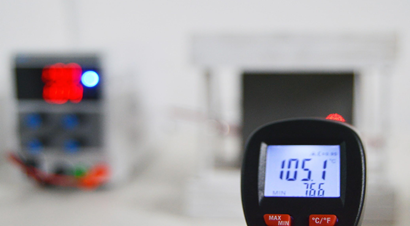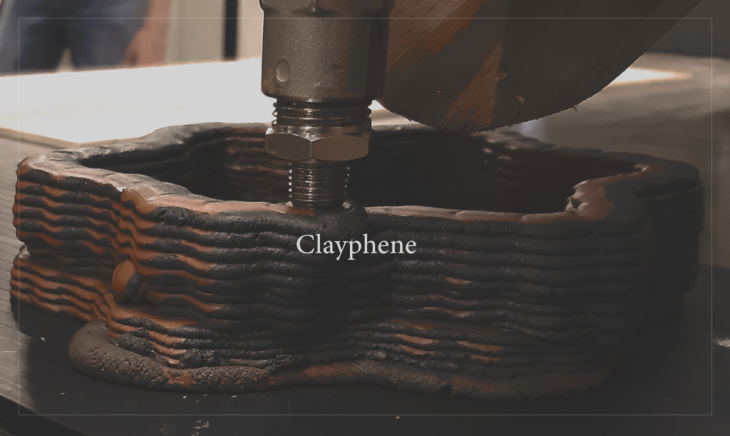
Abstract :
The Base of our project is to develop a composite material or its system like a wall which can replace home heating equipment or existing heating systems or reduce its usage. In recent years after the discovery of simplified extraction process of graphene; there has been a lot of research done on how to use graphene as a building material. Graphene has high thermal conductivity, very high electrical conductivity and good mechanical properties which can have potential applications in building design and construction sector. One such research project was carried out by a group of students here at IAAC; which focused on mixing graphene with different building materials and enhancing composite properties. We have taken this project and its findings as a base for our project. We are making a composite material by mixing graphene with clay which can replace existing heating systems. Clay is a very high resistance material which makes it electrically non-conductive. By mixing graphene with clay we can turn clay into electrical conductive and also heat generative material. Through our research, we are able to make a composite which can transform electricity into heat at a low resistance value.
Now our approach is to develop such a system; which can replace existing heating systems by combining both electrical conductivity and heat generation properties of this composites. Apart from an above-mentioned application; graphene and clay composite also has the potential to transfer electronic data which can replace the existing wire system for data transfer.
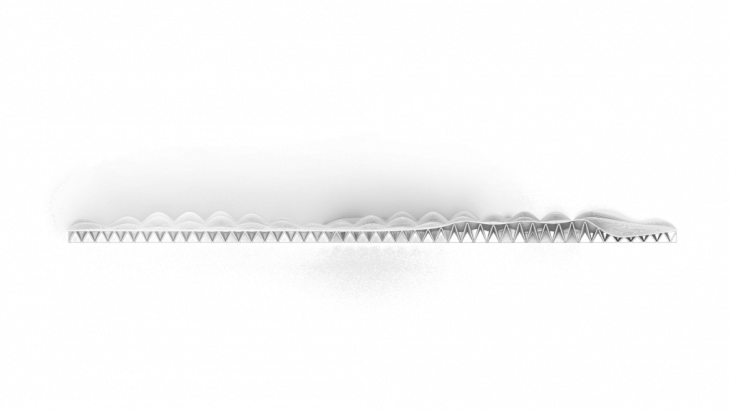
Introduction :
This research is part of the research studio Digital Matter – Intelligent construction of the master in the advanced architecture program at the Institute for advanced architecture of Catalonia. Literally, the research studio focuses on inventive architecture and material intelligence. Towards innovative thinking and designing with an unknown material in the field of architecture. detecting and researching the role of Graphene as newly discovered material and how that is related to innovative architecture these reasons are taken for this study. Inspecting how fabrication techniques with computing strategies can be integrated with designs that are leading to perform prototypes.
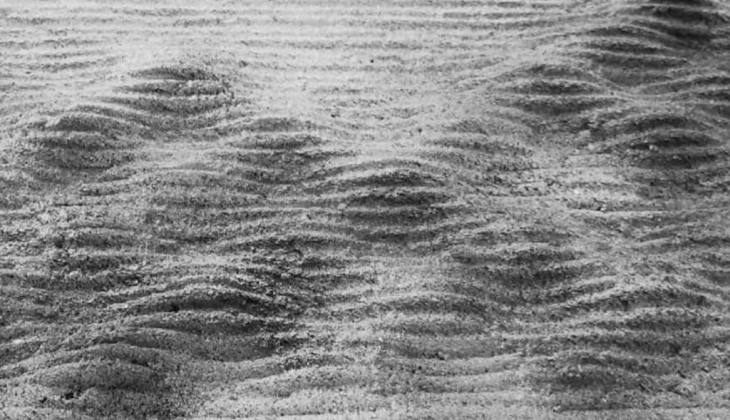
Hypothesis :
The hypothesis reassure a complex answer and sum up to significant issues the research will explore the following statement is the core of this project :
“Integrating traditional building materials with smart material as Graphene with different binders
to reinforce thermal properties .”
Research Methodology :
The graphene has excellent thermal, electrical, and mechanical properties. Focusing on these parameters with multi experiments were achieved, different composites of graphene and other materials were tested in a search for building material with the optimum characteristics.
in every phase of this research a prototype was produced to proof a specific concept which was later gone with different tests .these test was focusing on measuring the generation of the heat from the material composite, and the thermal conductivity. the potential use of the prototype as a passive heating system.
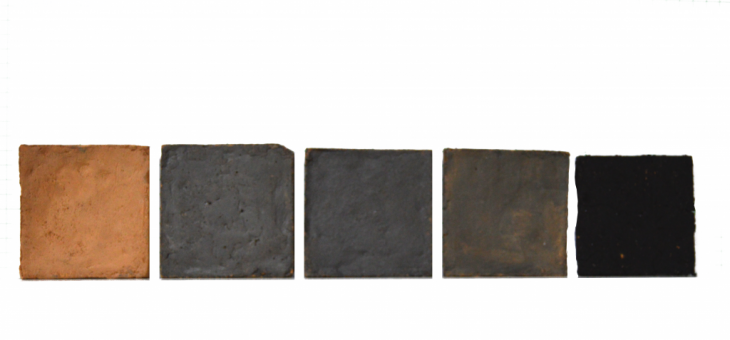
Composite Ingredients :
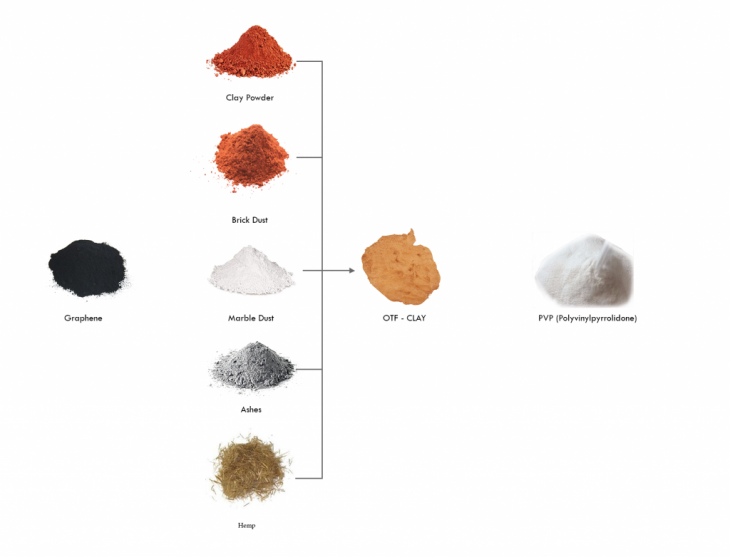
Clayphene Composites with different binders :

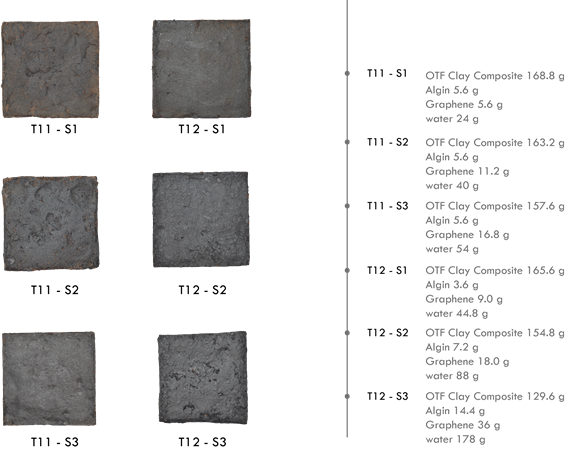
Mixing Formula :
 +
+ +
+ +
+ =
= 
Graphene Clay Binder material water Clayphene Composite
Tools test heat generation :
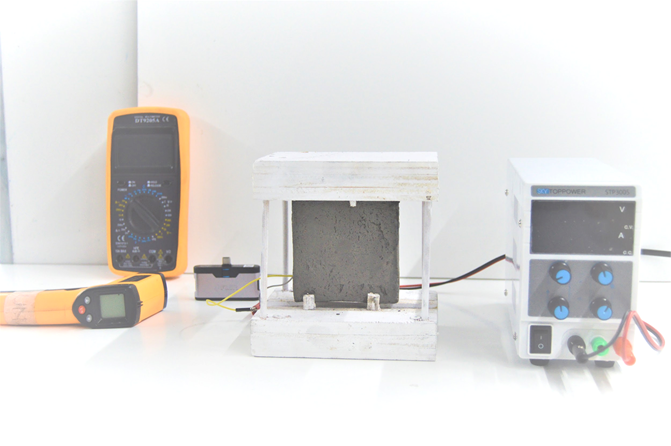
-Measure Height, width & thickness
-Measure Resistance value
-Measure both side surface temperature
-Turn on the power supply, thermal camera, timer
-Apply constant Voltage
-Measure Amp value
-After 1-minute measure temperature of both faces
-After 3-minute measure temperature of both faces
Location of the electrical points :

Sample Test Heat Generation :

-Distance between 2 electrical
-points: 8 cm
-Voltage Applied: 15 v
-Amp measured: 0.41
-Resistance: 500- 1000 ohm
chart showing temperature increase with time
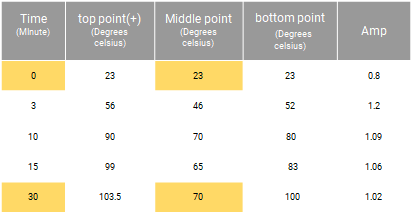
Clayphene Brick Prototype :
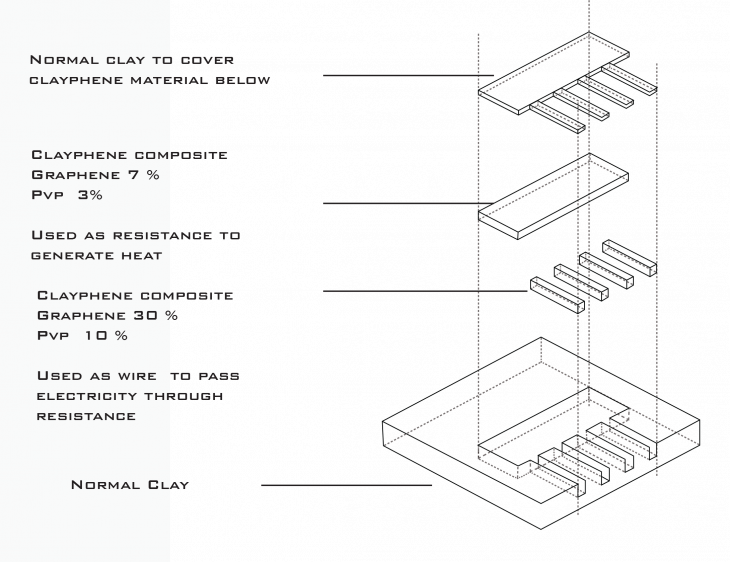

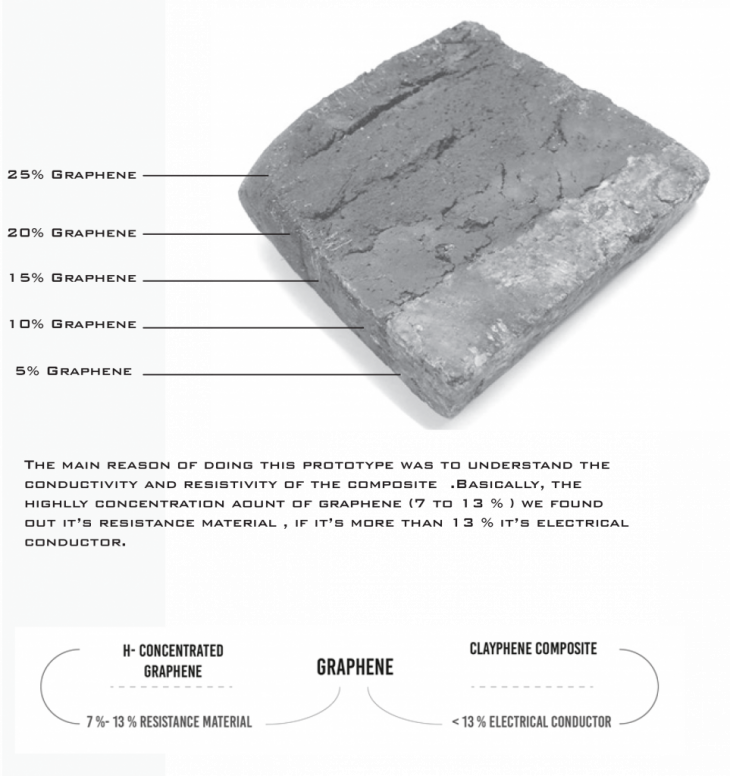
Optimization of the heating zones
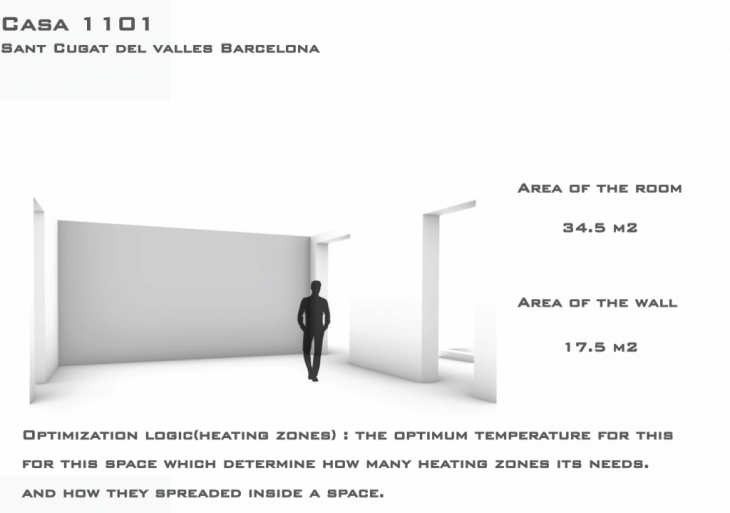
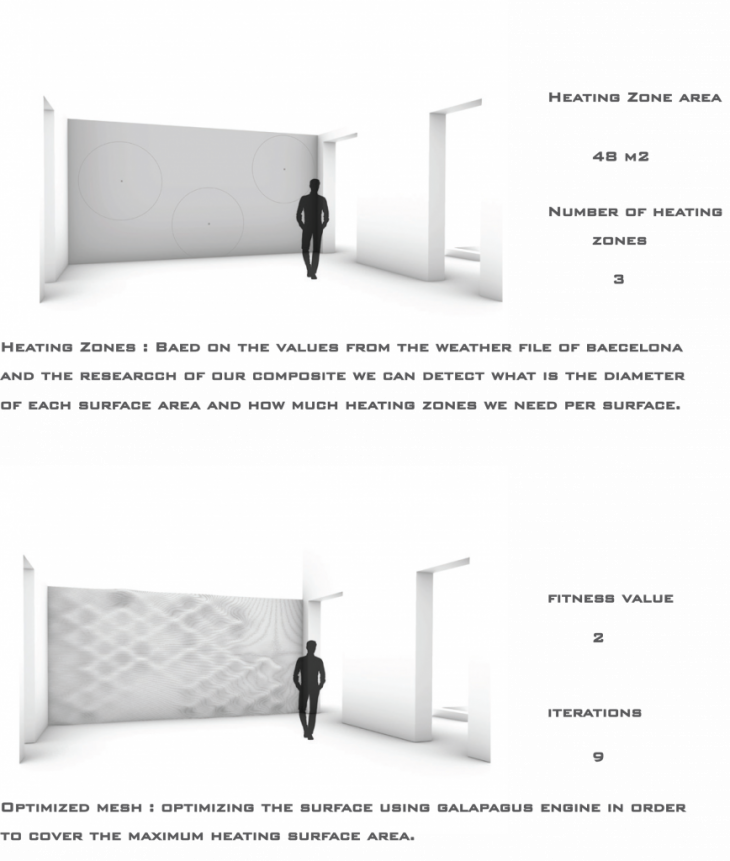
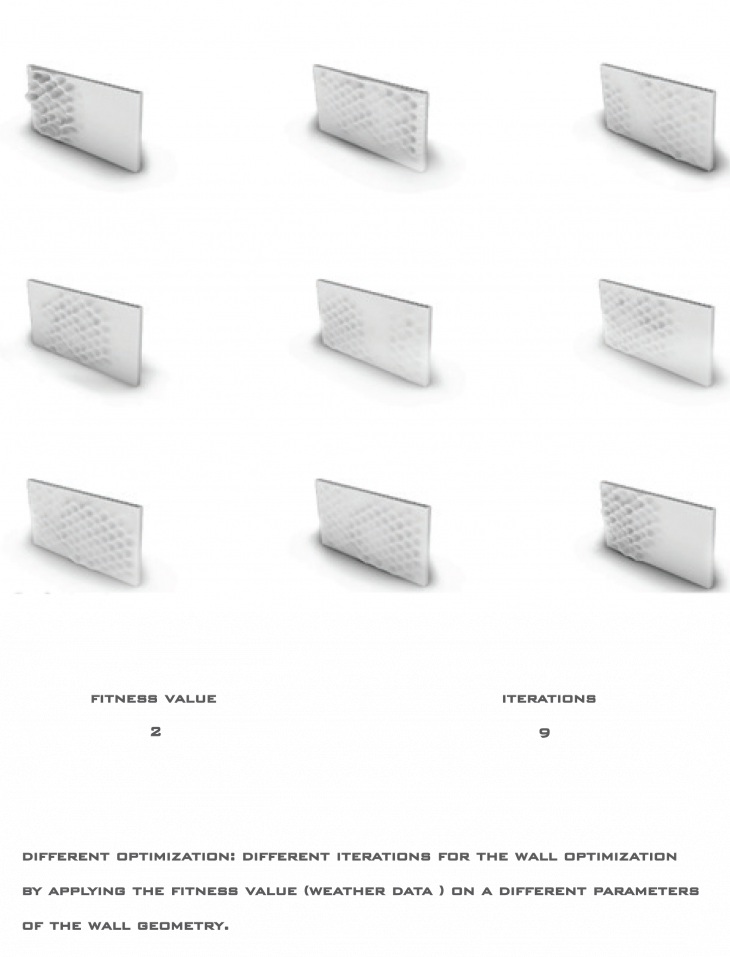
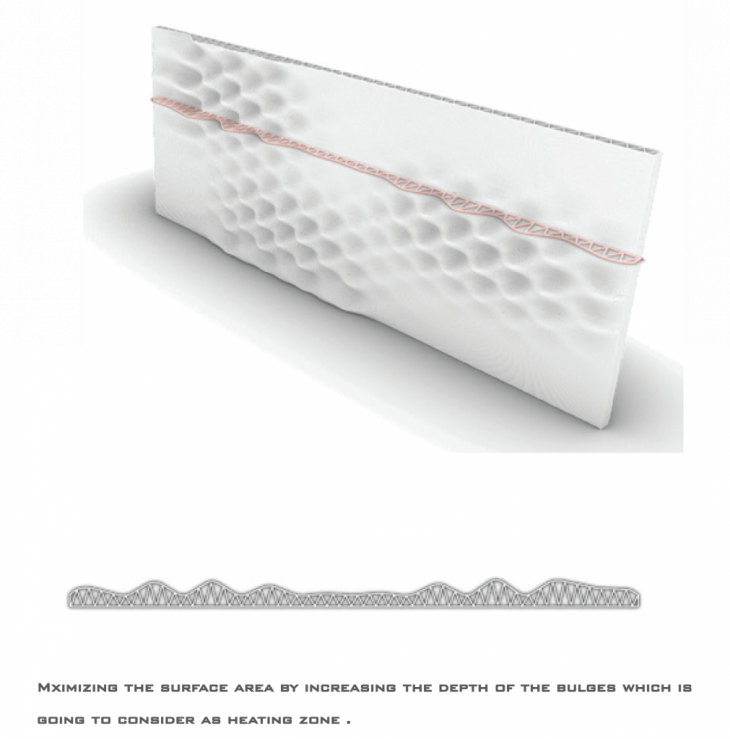
Fabrication Dual Extruder
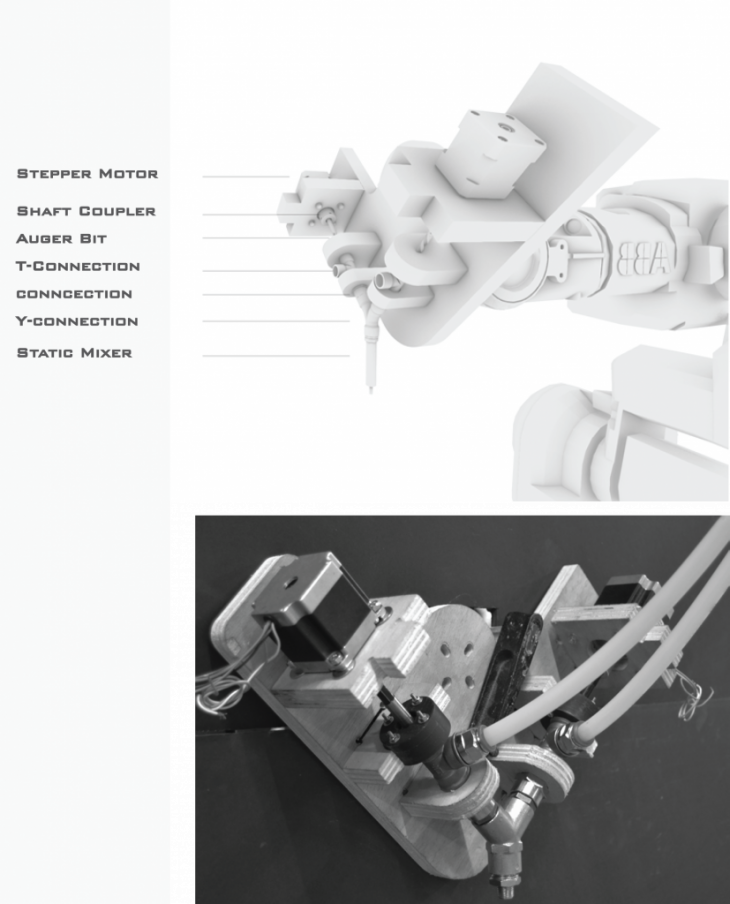
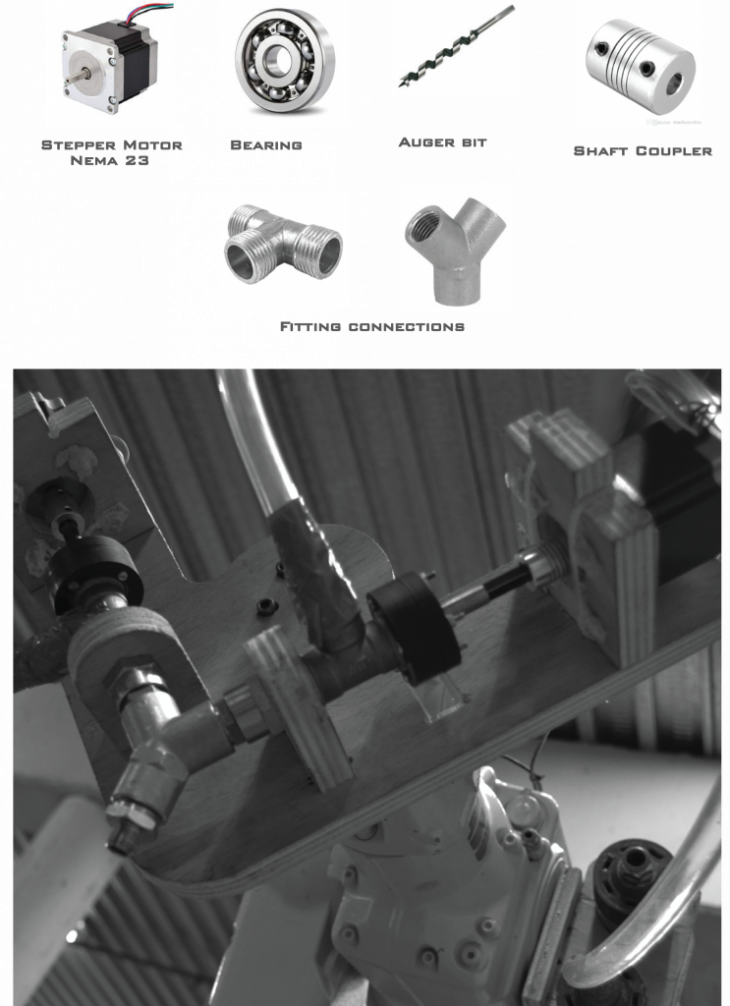
Additive manufacturing (ABB Robotic Arm)
-applying the digital design parameters in the fabrication process
-Maximizing the surface heating area
-Using different mixes
-Being able to achieve this kind of systems with one material system
-controlling these parameters and getting more precise outputs
Bibliography:
Shen,J.. , Hu,Y. , Li, C., Qin, C.and Ye, M.(2009).Syntl:tesis of Amphiphilic Graphene Nanoplatelets.Small, 5(1),pp.82-85.
Miyamoto,Y.(2000). Functionally graded materials. 1st ed.Reading:Kluwer Academic Publishers.
Wang,X.,Zhi, L. and Mullen, K.(2008).Transparent, Conductive Graphene Electrodes for Dye-Sensitized So lar Cells.Nano Letters,8(1),pp.323-327.
Watcharotone,S.,Dikin,D.,Stankovich,S.,Piner,R.• Jung, I.,Dommett, G.,Evmenenko,G.,Wu, S., Chen. S., Liu, C., Nguyen,S.and Ruoff, R.{2007).Graphene-Silica Composite Thin Films as Transparent Conductors. Nano Letters, 7(7),pp.1888-1892.
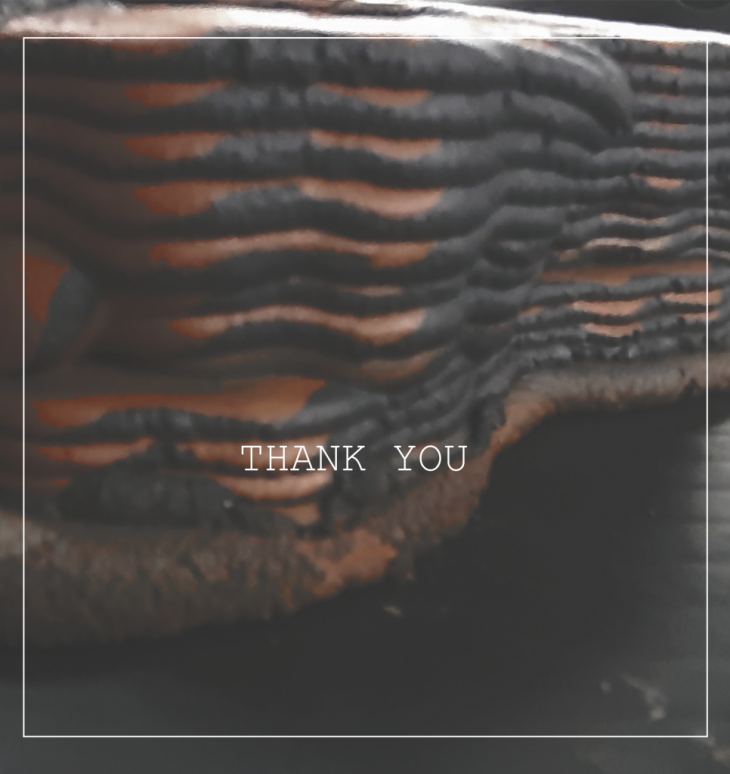
Clayphene is a project of IAAC, Institute for Advanced Architecture of Catalonia developed at Masters in Advanced Interaction in 2019 by:
Students: Alaa Aldin Albaroudi, Neel Prajapati, and Mohamad Fouad Nader Hanifa
Faculty: Areti Markopoulou, David Andres Leon, Raimund Krenmüller and Nikol Kirova

